Choosing a Sound System for Your Boat, Part 2

Wire and connection choice is critical in installing a high-output sound system on any boat. If your dealer does the installation, he’ll choose the right wiring setup but if you do it yourself, here are a few pointers.
Wiring for marine use is tinned Oxygen Free Copper (OFC), not aluminum or standard copper as is used in automotive stereo wiring, so look for those specifiers. Stinger Electronics and others provide wiring kits made specifically for boats. They offer “Siamese” wire, with 8AWG or 4 AWG wire that is jacketed together like speaker wire. The Stinger kits use the traditional marine color coatings for both positive and negative DC wires in order to keep them correctly color coded and separately from AC wires, and include appropriately-sized fuses, also marine grade.
Many techs recommend avoiding fuses in marine circuits and using circuit breakers instead—just a flip of the switch and you’re back on with the breaker, while an absent fuse can mean a day without music.
Just be certain to use wire and breakers sized to the power draw of the amplifiers. A system that regularly trips breakers is likely under wired—and can be dangerous as well as degrading sound quality.

Speakers that Will Survive
Some marine-grade speakers are specialized to the point of being mounted in sealed fiberglass or aluminum cases, which assure they’ll survive a lot better than conventional speakers. This is particularly true where the speakers must be mounted in the open, as is the case with speakers on tow boats for wakeboarding and skiing, and also those mounted on the tower of fishing boats.
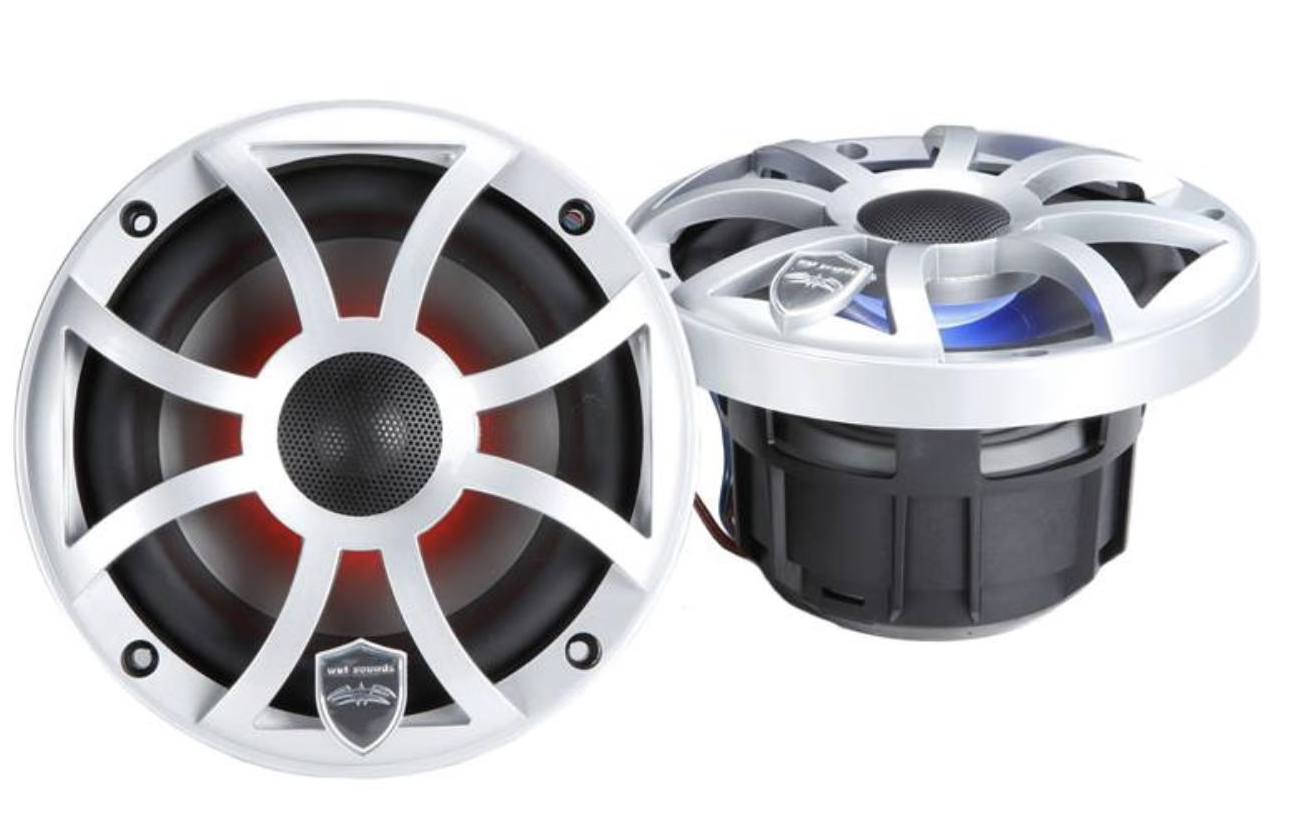
Even for those mounted in relatively protected areas, you’ll want to select models with “weatherproof” mounting and ultra-violet resistant grilles that will hopefully stand up to long-term sun exposure.
Speaker Mounting Locations
Speakers “beam” sound most strongly toward those directly in front of them, with the sound fading as the listener moves farther to the side. This is particularly true in an open boat moving at speed.
Add wind, wave and engine noise and a powerful high-end speaker can barely be heard in some performance and tow boats if the speakers are not directed towards the seating locations.
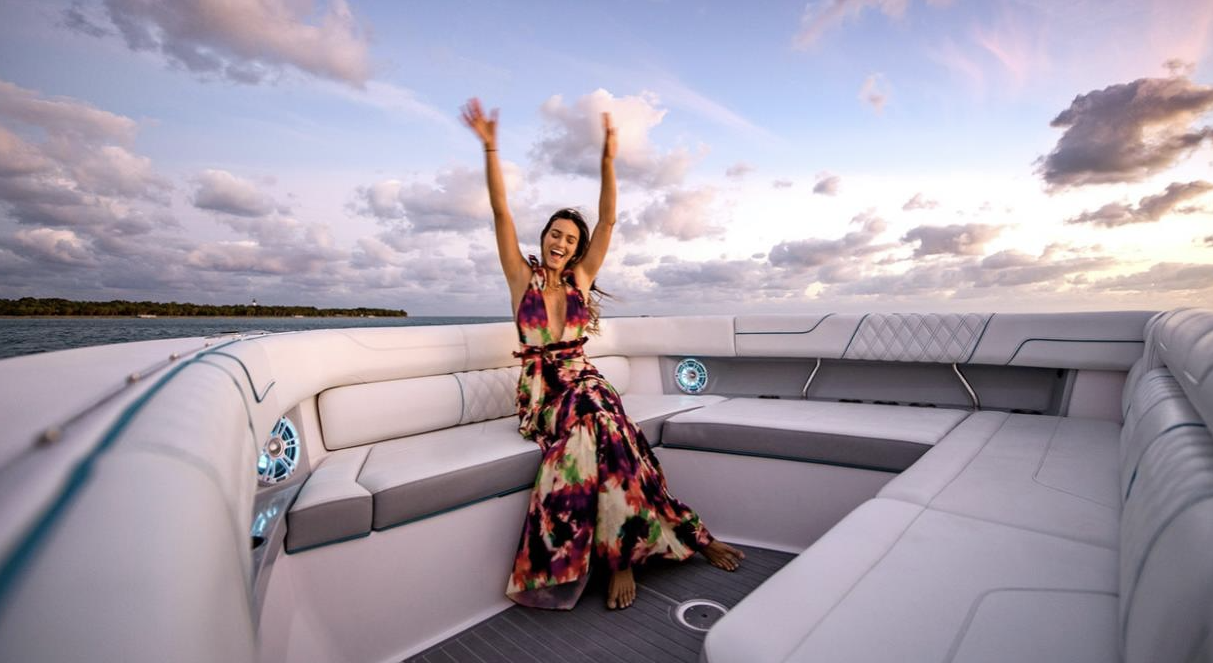
So, while having speakers tucked into every flat surface inside the boat can look impressive at the dock, the results may be less impressive out on the water. And conversely, having just a couple good speakers and woofers positioned and directed in the right locations can have great heard results while underway.
As a rule, speakers located below the gunwales will be better heard while under way than those mounted above on a tower because the sound is more or less corralled by the inwales with low mounts.
On the other hand, if you most want your system to be heard at its best when someone is riding a wake behind the boat, or when your guests are in the water or relaxing on the sandbar, then tower speakers that can be directed outside the boat will do a superior job.
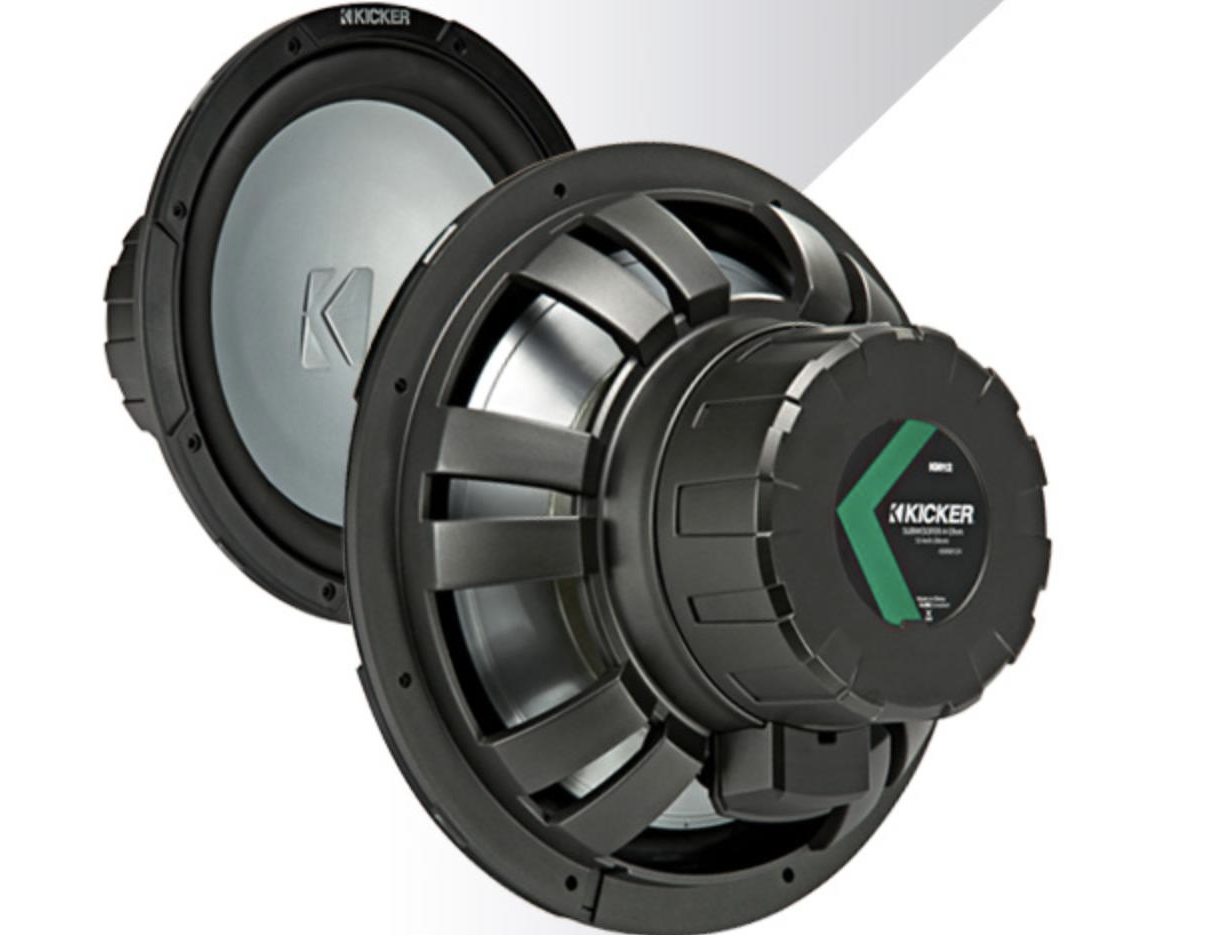
On powerboats, you’ll almost certainly want to add a subwoofer or two in addition to a couple of standard speakers. The subwoofer provides the sound you feel in the soles of your feet that most people look for in a quality setup.
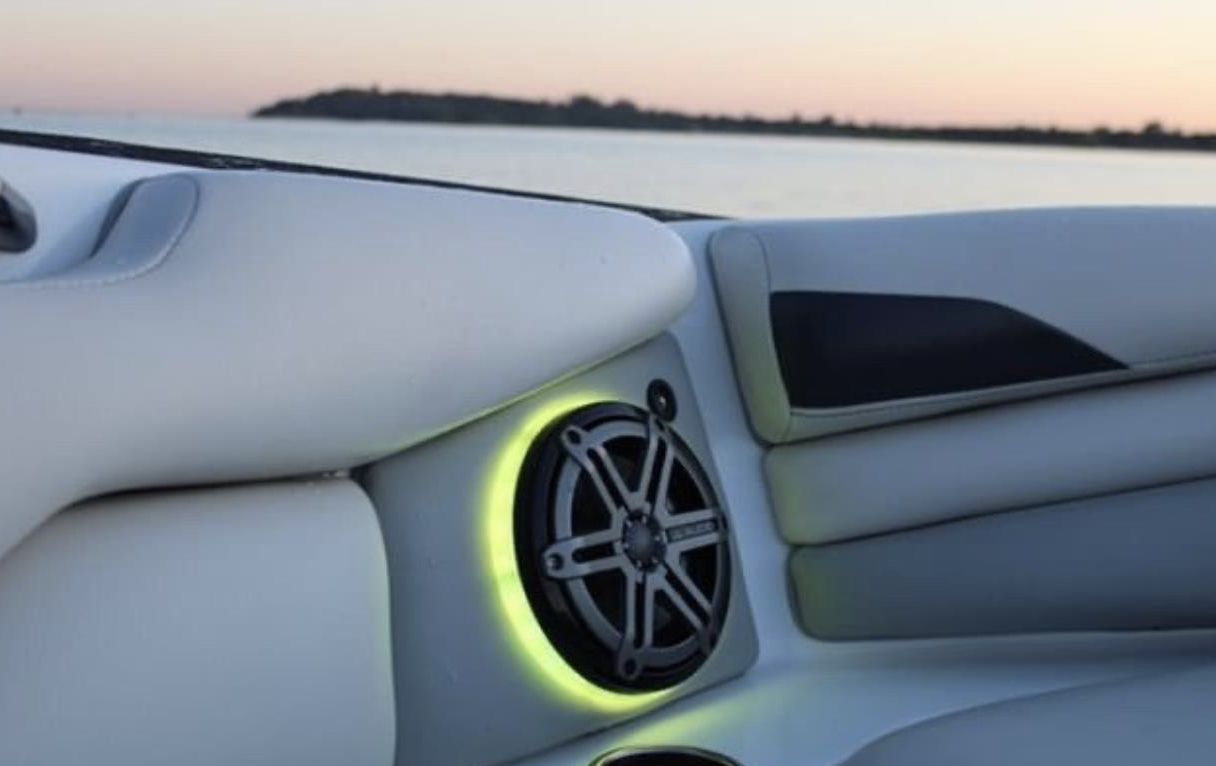
Many companies now offer waterproof LED light kits that go with their speakers, adding another layer of stimulation for those who feel the need.
Fit the System to Your Budget
Quality, full-featured marine stereos can be purchased for as little as $130, while some with added bells and whistles and premium names range on up to around $700—not terribly pricey as marine accessories go.
But remember this is only part of the system.
A marine-grade amplifier like the Fusion Signature Series 8 adds another $850 to the total, a JL Audio MV700/5i another $1250.
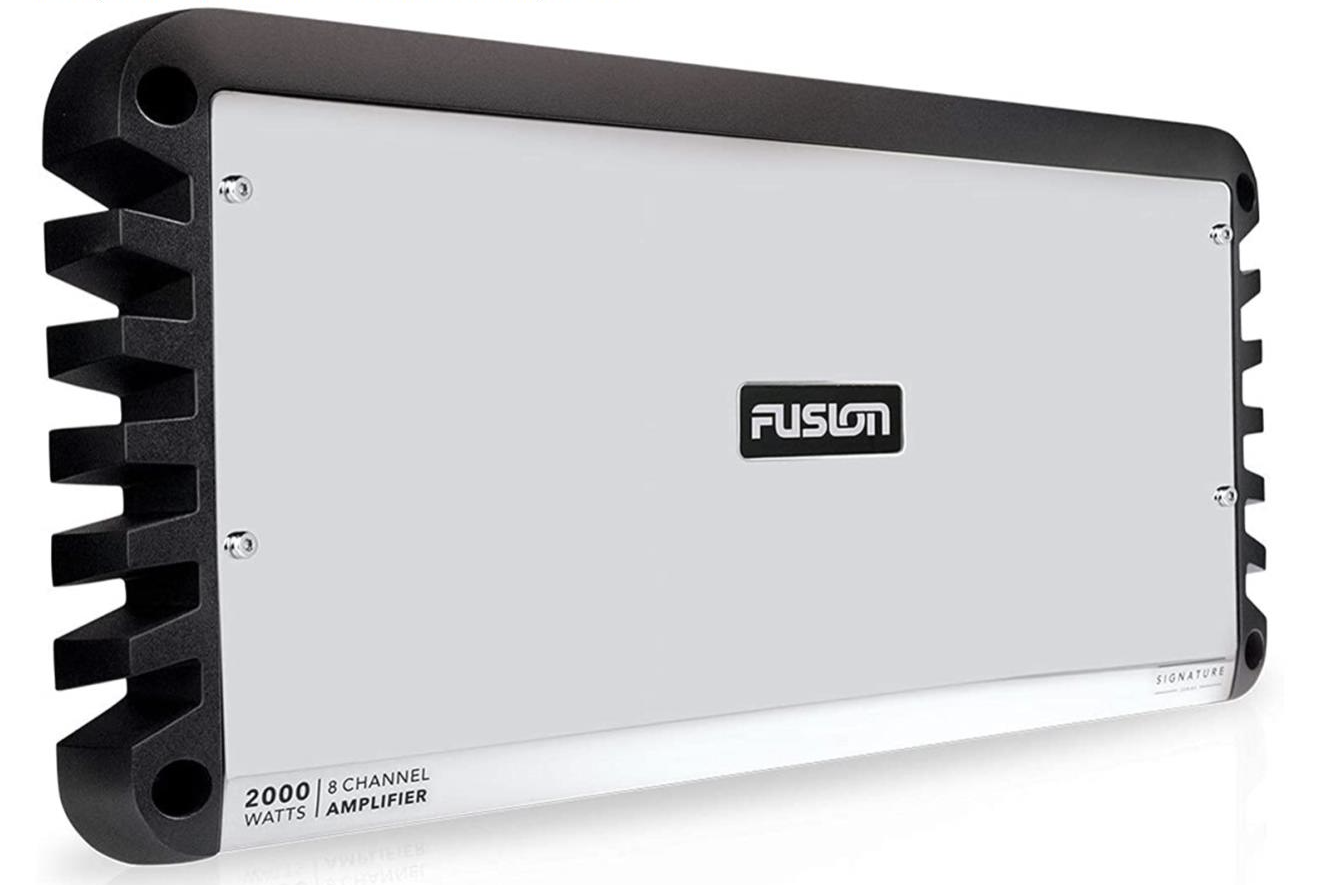
All that power is useless without speakers, of course. A pair of Wet Sounds REVO 6-XSS in the 6.5 inch size with lighting goes for close to $500. Add a JL-Audio M6 subwoofer in a sealed fiberglass case and the price goes up another $1100.
Installation can be from $500 to $800, depending on the complexity of the system and the difficulty of fitting it to your particular boat.
Last but not least, if your boat does not have a generator, add a dedicated battery to power your stereo. That way you won’t have that dreaded moment when it’s time to go home and the starting battery is flat as a flounder. Lead-acid deep-cycles adequate to the job go for around $120, while light-weight lithium models can be over $1,000.
Bottom line, for a good marine grade system professionally installed you’re looking at around $2,750 to as much as $5,000 all in. That’s not pocket change for most of us, but build the system carefully with quality components and it’s likely to survive for years of adding to your family’s boating enjoyment.
Marine Audio Component Manufacturers:
Fusion: www.fusionentertainment.com
JL Audio: www.jlaudio.com
Kenwood: www.kenwood.com
Kicker Marine: www.kicker.com
Rockford Fosgate: www.rockfordfosgate.com
Sony: www.sony.com
Wet Sounds: www.wetsounds.com